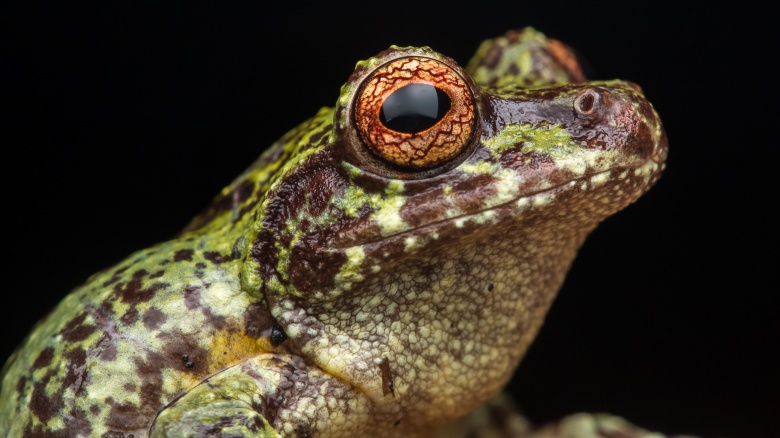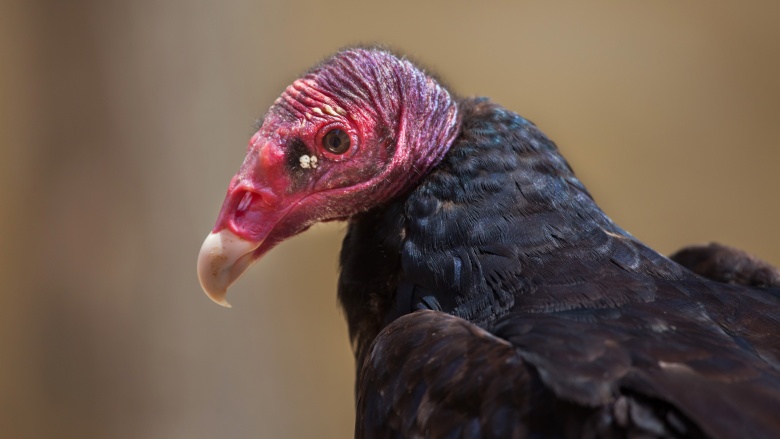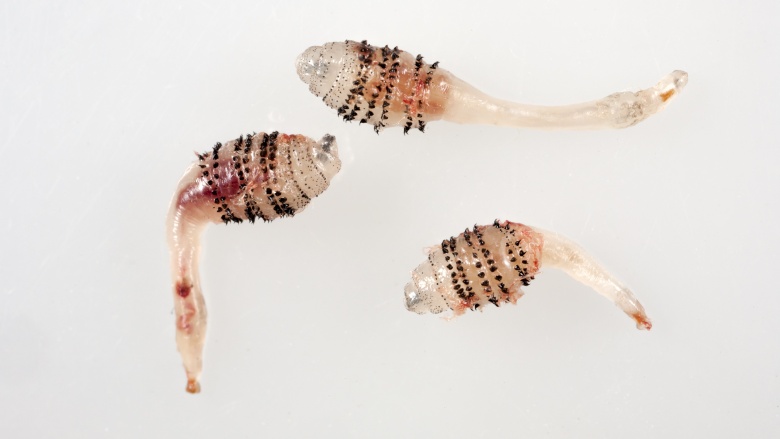Bizarre Experiments Involving Animals
Scientists are always trying to unlock the secrets of the universe, and that means they have to perform some pretty unusual experiments. Sometimes, they run their weird tests on human subjects, but more often than not, researchers spend their days poking and prodding at unwitting animals. Some of these studies are benign, others are nightmarishly awful, but they're all incredibly bizarre.
Frogs in pants
Back in the 1700s, scientists were puzzled about how reproduction actually worked. Sure, they understood the basic mechanics, but what exactly happened to create new life? Was semen an important part of the process? And what about sperm? Antonie van Leeuwenhoek had discovered the stuff in the 1670s, but what role did it play? Making things more confusing, some scientists thought life could spring from non-life (meat could produce maggots), while others subscribed to preformationism—the idea that living things developed from smaller versions of themselves.
Hoping to get to the bottom of things, a Catholic priest named Lazzaro Spallanzani decided to run a unique experiment. He captured a whole bunch of frogs, male and female, and then encouraged the creatures to mate. However, while half of the frogs were hopping around au naturel, others were wearing "tight taffeta pants." That's right. Spallanzani put frogs into handmade trousers, which basically served as amphibious condoms.
After letting the frogs intermingle, Spallanzani noticed the females that gave birth had mated with the naked frogs. The gals who'd gone out with the dressed-up dudes didn't produce any tadpoles at all, confirming Spallanzani's theory that both semen and ova were necessary to create life. However, Spallanzani didn't think sperm was all that necessary, but hey, you can't get everything right all the time. And thanks to his nutty experiment, the people of Scandiano, Italy, erected a statue in his honor, depicting the scientist with a frog in hand. (Sadly, the frog isn't wearing pants.)
Mind-control monkeys
Mind control is a classic trope of the sci-fi and fantasy genres. After all, who wouldn't want to move stuff around with their brains? But while telepathy seems impossible, researchers from the University of Pittsburgh and Carnegie Mellon University have made some shocking strides when it comes to mind control...with the help of a few monkeys, of course.
In 2008, a couple of macaques were introduced to some mechanical arms. The monkeys were allowed to use a joystick to move the arms around, thus learning how to open and close the mechanical fingers and make the arms bend at the elbow. After they got the hang of moving the hands, the monkeys were implanted with little sensors, grids full of electrodes that were plugged into the macaques' motor cortices. The chips were then hooked up to a computer which received electronic messages directly from the monkeys' brains.
The computer then relayed the information to the mechanical arms, and after a few days of coaching from scientists, the monkeys could move their robo-appendages by simply using their brains. They could pick up food, push it down their throats, and even lick the mechanical fingers. But things got even crazier in 2013 when scientists from Duke created an interface that allowed monkeys to mentally control a mechanical arm from over 7,000 miles away.
Universe 25
If you're a fan of animated movies, then you've probably seen The Secret of NIMH, a film about super-intelligent rats that escape the clutches of government scientists. The movie was based on a novel by Robert C. O'Brien, but where did he get the idea for his children's tale? Well, O'Brien was inspired by a real-life experiment conducted by John Calhoun, a scientist who created a mouse utopia only to watch it fall apart.
Calhoun was absolutely obsessed with rodents. Over several years, he'd constructed a series of "cities" for rats and mice. These places were little paradises, full of food and free from predators. But each time, the rodent societies completely collapsed, resulting in anarchy, malaise, and death. Calhoun ran this experiment 24 times before creating his ultimate utopia, a civilization called "Universe 25."
Universe 25 was located at the National Institute of Health in Bethesda, Maryland. It was basically a massive tank full of food, water, and little apartments. The climate was perfect, and there weren't any cats or owls prowling around, so when the first eight mice arrived on the scene, it was like they'd gone to heaven. Soon, the population skyrocketed to 2,200... and that's when everything fell apart.
With so many mice everywhere, the rodents got stressed out. There weren't enough societal roles to go around, it was getting hard to stake out territory, and finding mating partners was growing more difficult. Some mice began to attack each other, while others started cannibalizing their neighbors. Some females killed their offspring or abandoned their babies, while others hid themselves away, refusing to mate. Some males dubbed "the beautiful ones" retreated from society and refused to do anything except groom themselves. Soon, the once-thriving universe was an apocalyptic wasteland.
According to Calhoun, while the mice had plenty of food and water, they'd slipped into apathy because they'd lost their sense of self in their ever-expanding society. Calhoun predicted the same thing might happen to humanity if people didn't learn how to establish their own spaces and interact with others in a massively overcrowded world.
The bizarre buzzard experiments
Make a list of the greatest all-time conservationists, and John James Audubon will end up in the top ten. But even geniuses make mistakes and Audubon screwed up while studying buzzards. According to the ornithologist, vultures had a lousy sense of smell. Instead, he thought these birds found carrion with their sense of sight. Audubon backed up these claims by sewing up a deer skin full of straw and tossing it into a pasture. Soon, vultures were ripping the pillow open, only to find they'd been tricked. However, when Audubon buried a dead hog under a pile of grass, the buzzards were nowhere to be seen.
Wanting to support his Audubon's theory, a South Carolina minister named John Bachman performed his own unusual experiment. He hid several chunks of rotten meat, but the vultures never showed up for dinner. However, after displaying a painting of a dead lamb in the middle of a field, several birds started pecking at the portrait, trying to devour the canvas. They were reported as being very disappointed.
It certainly seems like Audubon and Bachman had proven their point, but their results were slightly misleading. As it turns out, certain kinds of vultures—like the black buzzard—do rely on their eyesight, and these were probably the birds the two researchers encountered. But scavengers such as turkey buzzards and yellow-headed vultures possess an amazing sense of smell. So at the end of the day, it seems like everybody was a winner, except for those buzzards that tried to eat a stupid portrait.
Botflies and sand fleas
In their search for truth, scientists often employ experiments that make the rest of us shudder in disgust. Take the case of Jerry Coyne, for example. He's an evolutionary biologist at the University of Chicago, but in 1973, he was a Harvard student working in Costa Rica. While down in the rainforest, he was bitten by a mosquito. A few days later, he discovered a strange bump on his head. As the bump got larger, Coyne suddenly realized what was happening. There was a botfly in his head.
Botflies are the real-life xenomorphs of the insect world. A female will capture a mosquito, attach eggs to the mosquito's wings, and then let the blood-sucker go. When the mosquito lands on a human, the botfly eggs hatch, and a larva burrows into its victim's skin, making a nice home where it can get bigger and bigger, all while munching on flesh. In this case, that flesh just happened to be human. Initially, Coyne was disgusted by the maggot squirming under his scalp, but eventually, the curious scientist decided to let nature run its course.
According to Coyne, the worm grew to the size of a "quail egg." As it wiggled around, it created a "terrible itch," and he often felt the creature "grinding up against" his skull. He also reported the maggot freaked out whenever he took a shower because the water cut off its oxygen. But eventually the 1 ½ inch-long creature crawled out of Coyne's head, and the scientist tried to keep it alive until adulthood. Unfortunately for the botfly, it passed away because Coyne had returned to Boston, which isn't ideal for a tropical creature.
Of course, Coyne isn't the only scientist who has played host to a parasite party. In 2011, Marlene Thielecke was a PhD student working in Madagascar. She was in an area where people were afflicted with sand fleas, nasty parasites that crawl into the skin where they defecate, mate, and reproduce. This creates a devastating skin condition called tungiasis, and Thielecke was helping patients when a flea burrowed into her foot. Interested to see what would happen, she left the flea alone, letting it grow into a centimeter-long monster. Fortunately for her, it never reproduced or attracted any roommates. Eventually, the pain was too bad and Thielecke was having trouble walking, so she ended the experiment with a few surgical tools.
The man who remote-controlled a bull
Jose Manuel Rodriguez Delgado was a Yale researcher and a bit of a mad scientist. Like Frankenstein, Delgado wanted to harness the power of electricity. But instead of reviving the dead, Delgado wanted to manipulate the living. In the 1950s and '60s, Delgado used a combination of computer chips, radio frequencies, and electric impulses to control aggression in monkeys, induce involuntary movement in cats, and train a chimp's amygdala to stop generating a certain type of brain signal.
Delgado also experimented on people, using electric waves to create emotions like happiness, lust, and fear in his human subjects. But his biggest—and craziest—triumph came in 1963. With the flair of a circus performer, Delgado arranged a wild experiment inside a Spanish bullring in the city of Cordova. At one end of the arena, there was a bull, ready and raring to go. On the other end, there was Delgado, armed only with a "stimoceiver," a remote control that would send a radio frequency to a chip in the bull's brain.
When the bull spotted Delgado across the ring, it charged straight at the scientist, but as the raging animal got closer, Delgado simply pressed the button on his stimoceiver. Suddenly, the bull stopped in its tracks and just walked away, like it'd forgotten Delgado was even there. According to the scientist, he'd inhibited the bull's "aggressive drive," on top of physically stopping the animal from attacking. However, despite the effectiveness of his techniques, critics worried Delgado's research could turn humans into zombie-like pawns, and his research into mind control eventually fizzled out.
Elephants and LSD
The 1960s was a crazy decade when it came to LSD. The CIA was running MKUltra, Timothy Leary was telling everyone to "turn on, tune in, and drop out," and a group of Oklahoma researchers were wondering what would happen if an elephant got high.
The team consisted of two scientists from the University of Oklahoma and the director of the Oklahoma City Zoo. For some reason, the trio wanted to know if LSD could make an elephant go into musth, a condition where male elephants produce a lot of testosterone and become super aggressive.
Why the researchers wanted to induce musth isn't clear, but in 1962, they injected an Asian elephant named Tusko with 297 milligrams of LSD. That's about 3,000 times the amount a person can take, and it's pretty extreme for an elephant, too. Almost immediately, Tusko freaked out, running around his pen and trumpeting at full volume. Suddenly, he toppled to the ground and went into convulsions. Hoping to resuscitate him, the scientists injected him with a massive dose of Thorazine, followed by a tranquilizer.
Nearly two hours after the first injection, Tusko was dead. While many people originally assumed this was because of the LSD, it's likely the elephant was killed thanks to the Thorazine or the deadly combination of drugs. Believe it or not, the experiment was repeated in 1984 by a psychologist named Robert Siegel. This time around, he gave two elephants water laced with LSD, but instead of violently shaking, they just got kind of tired. This second experiment indicates perhaps the Thorazine was responsible for Tusko's death, but there's also the possibility he was just given way too much acid.
Either way, it's probably a bad idea to give LSD to an elephant.
Tim Friede, the Snake Man
Most people want to stay far away from snakes. Of course, Tim Friede isn't "most people." He owns quite a collection of killer serpents, but despite his love of reptiles, Friede is a pretty controversial character in the world of herpetology. That's because he's a big believer in self-immunization, the practice of injecting yourself with small doses of snake venom in order to build up immunity. But after 16 years of filling his system with toxins, Friede is now able to take a bite straight from a snake, which has turned his life into one long experiment.
For example, in 2013, Friede attempted to take bites from five different snakes in 48 hours. While he only managed four—including bites from a rare African water cobra (which there's no antivenom for) and a Mojave rattlesnake—Friede survived the incident, whereas most people would've died in agony. Then in 2016, Friede took back-to-back bites from a taipan and a black mamba, two of the deadliest snakes on Earth. According to Friede, he's nearly died on at least 25 occasions, and after taking a bite from a monocled cobra, he had to self-amputate a chunk of rotten flesh.
Why does Friede put his life on the line? Well, according to the Snake Man, he hopes scientists can one day use his blood to create a some sort of super antivenin. He's even sending his results to a snake researcher, although most universities don't want anything to do with his crazy experiments. Still, he's survived multiple bites from some of the most dangerous animals on the planet. So perhaps there's a method to Friede's madness, but are the benefits worth the risks?
Harry Harlow's horrible experiments
During the '60s and '70s, University of Wisconsin psychologist Harry Harlow was studying a topic that, on the surface, seemed pretty sweet. He wanted to understand love. More specifically, he wanted to learn how love shaped society and built bonds between people. So in order to understand life's greatest mystery, he decided to torture a bunch of monkeys.
First, Harlow separated several baby monkeys from their moms. He then passed the juveniles onto the "Iron Maidens," artificial mothers made with wire, wood, and milk bottles. Over the course of the experiment, the lonely babies eventually bonded with their metal moms (in spite of the spikes and cold air jets, added to complete the atmosphere of abuse), but this was just the beginning of Harlow's twisted tests. Next, he kept baby monkeys in solitary confinement for months or even years. Later, he took things up a notch by locking monkeys into cages he called "Wells of Despair." Here, the monkeys lived in total darkness, separated from friends and family. Not surprisingly, quite a few of these test subjects completely lost their minds.
Harlow eventually found himself facing a conundrum when his traumatized monkeys refused to procreate. To "help" them, Harlow constructed little boards he called "rape racks." Mentally disturbed female primates were strapped down to boards and forced to mate. Harlow would photograph the process and watch as these disturbed moms eventually killed their offspring. Despite all the horror, there is a silver lining to this story as Harlow's experiments were partly responsible for kickstarting the animals rights movement.
The utterly insane dolphin project
Dr. John Lilly had some weird ideas about dolphins. This 1960s neuroscientist was convinced they could learn to speak English. Wanting to prove his hypothesis, Lilly opened a laboratory on the Caribbean island of St. Thomas. That's where he met Margaret Howe Lovatt, a 20-something islander who volunteered to work with Lilly's dolphins. Lovatt spent her days speaking into a microphone, teaching the animals how to pronounce vowels or say, "Hello, Margaret." Lovatt eventually came to the conclusion that if someone stayed with the dolphins 24/7, then perhaps they could make bigger strides. That's how Lovatt ended up living with a young male named Peter. A diehard volunteer, Lovatt moved into a water-filled room where she erected a bed on a raised platform and rigged up a desk to hang from the ceiling. She lived with Peter six days a week, encouraging him to speak English through his blowhole and getting to know him pretty intimately.
Like very intimately.
Similar to any young male, Peter had just one thing on his mind, and he was constantly trying to seduce his roommate. Worried Peter's sexual desires would interrupt their lessons, Lovatt decided to give Peter what he wanted. So whenever Peter started getting frisky, Lovatt used her hand to manually...well, yeah. And if that wasn't weird enough, Dr. Lilly was giving acid to two other dolphins, hoping it would lead to new breakthroughs. (But as it turns out, dolphins aren't really affected by LSD.)
Lovatt ended up staying with Peter for somewhere between six to nine months. Eventually, funding for the experiment ran out, and Lilly closed down the lab. It probably didn't help things when the public learned about all the sex and drugs going down on St. Thomas. Thanks to Lilly and Lovatt's unorthodox methods, people became reluctant to fund future dolphin communication projects, although Lilly would later attempt to speak with his aquatic friends via music and telepathy.




